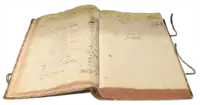| Part of a series on |
| Accounting |
|---|
 |
IAS 39: Financial Instruments: Recognition and Measurement was an international accounting standard which outlined the requirements for the recognition and measurement of financial assets, financial liabilities, and some contracts to buy or sell non-financial items. It was released by the International Accounting Standards Board (IASB) in 2003, and was replaced in 2014 by IFRS 9, which became effective in 2018.
It was adopted by the European Union in 2004.[1]
In 2005, the EU also introduced the fair value and hedging provision of the amended version of IAS 39.[2][3]
The EU version was changed at the end of 2008 in response to the financial crisis of 2008.[4] The comparative accounting measures in the United States are FAS 133 and FAS 157. The Financial Accounting Standards Board (FASB) released a 'FASB Staff Position' statement in October, 2008, in response to the financial crisis.[5]
References
- ↑ "Accounting standards: Commission endorses IAS 39". European Commission. 2004-11-19. Retrieved 2008-10-12.
- ↑ "EU adopts new accounting rules for financial derivatives". Forbes. 2005-11-15. Archived from the original on February 12, 2006. Retrieved 2008-10-12.
- ↑ "Accounting standards: Commission endorses "IAS 39 Fair Value Option"". European Commission. 2005-11-15. Retrieved 2008-10-12.
- ↑ "EU executive to ease fair value on banks". Reuters. 2008-10-10. Retrieved 2008-10-12.
- ↑ "FASB Staff Position No. 157-3, Determining the Fair Value of a Financial Asset When the Market for That Asset Is Not Active" (PDF). Financial Accounting Standards Board. 2008-10-10. Retrieved 2008-10-12.
External links
- Technical Summary of IAS 39 ifrs.org LIEN MORT
- text of standard - ifrs.org (registration required)
- Education Material and Services by Standard - IAS 39 iasb.org LIEN MORT - LINK DEAD
- Fair Value Measurement iasb.org LIEN MORT - LINK DEAD
- www.iasplus.com/standard/ias39.htm Summary of the IAS39 by Deloitte